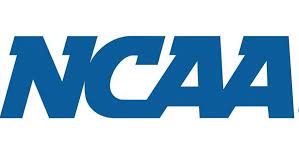INDIANAPOLIS, INDIANA (May 8, 2023) – The proposed rule changes by the NCAA Men’s and Women’s Basketball Rules Committees for the 2023-24 season include allowing players to wear numbers 0-99 on their uniforms. Currently the numbers 6 through 9 are not permitted for use as a single digit or in a double digit (i.e., 46 or 88) on NCAA basketball uniforms.
Two other proposals impacting uniforms or equipment are schools would no longer have to submit a waiver for players to wear religious headwear, provided it is safe for competition, and red and amber lights would be allowed on the backboard.
All rules proposals must be approved by the NCAA Playing Rules Oversight Panel, which is scheduled to discuss men’s and women’s basketball recommendations via a virtual call June 8.
The men’s rules proposals included a change to the legal guarding position on block/charge scenarios involving defenders around the basket. Under the recommendation, a defender would have to be in position to draw a charge at the time an offensive player plants his foot to go airborne to attempt a field goal. If the defender arrives after the offensive player plants a foot to launch toward the basket, officials would be instructed to call a block when contact occurs between the two players.
A secondary defender still would have to be outside the restricted-area arc to legally draw a charge.
Currently, defenders must be in position to draw a charge before the offensive player goes airborne.
Rules committee members made the proposal after receiving feedback from the membership that too many charges are being called on these types of plays. Through the years, block/charge calls have been among the toughest for officials to judge.
The rules committee thinks the change would give officials more time to officiate these plays.
“Our goal is to try to reduce the number of charges that are called,” said Rick Barnes, the committee chair and coach at Tennessee. “We want to give more time to the offensive player to adjust to defensive player movement and reduce the hard collisions that are taking place.”
Other men’s rule proposals:
- An optional rule would allow for preloaded/live video to be transmitted to the bench area. This has been an experimental rule for the past two years.
- Officials would be able to review goaltending/basket interference calls during the next media timeout to ensure the calls were accurate, as long as the official calls it on the floor. If there is a foul on the shooter while the ball is in the air with a goaltend/basket interference, the review would be immediate to properly adjudicate the potential free throws.
- Nonstudent bench personnel would be allowed to serve as peacekeepers when an altercation occurs.
- Under two minutes, when a coach requests an out-of-bounds play be reviewed, that team would be charged a timeout if the original call is not overturned.
- Anytime the ball hits the rim and the offense retains possession in the front court, the shot clock would reset to 20 seconds.
- If a player is called for a foul and instant replay officials see that the foul is a direct result of a flagrant 1 or flagrant 2 foul against the player who was originally assessed a foul, officials would be allowed to remove the foul on the player who was flagrantly fouled.
- A timeout would be able to be granted when a player has possession of the ball even though the player is airborne. (An example would be a player grabbing a loose ball and calling timeout before landing out of bounds.)
- If a player commits three flagrant 1 fouls in a game, the player would be disqualified from the game.
The men’s rules committee also approved experimental rules for the 2023-24 season:
- To continue the experimental rule with the standard media timeout format in the second half (first dead ball under 17 minutes, 14, 11, eight and four) for any interested conference, as well as in the National Invitation Tournament.
- In the NIT, widening the lane to 16 feet.
Note: The experimental rules for the NIT must be approved by the NIT Board.
Women’s Flopping Rule Proposal
If approved for the 2023-24 season, a proposal has women’s players judged to have flopped would be issued a warning on the first offense, with a technical foul being charged for any subsequent infractions.
Under the recommendation, the second and any subsequent flop calls would count toward the team foul count but would not count toward a player’s five fouls leading to disqualification.
The committee met Wednesday-Friday in Indianapolis. All rules proposals must be approved by the NCAA Playing Rules Oversight Panel before becoming official. The panel is scheduled to discuss women’s basketball recommendations June 8.
Rules committee members think the recommendation is needed for the sport after receiving feedback from all three divisions about their concerns regarding flopping.
The committee hopes this change will reduce situations where players are trying to fool the officials.
“For the last two years, the rules committee made faking and flopping a point of emphasis for officials,” said Amy Vachon, rules committee chair and head coach at the University of Maine. “There is still a growing concern about this issue in women’s basketball, so this is the committee’s attempt to address the issue.”
Restricted-area arc, lower defensive box
After a thorough discussion, rules committee members recommended reducing the restricted-area arc from 4 feet in the lane to the area directly underneath the basket. Defenders cannot establish a legal guarding position directly underneath the basket. The proposal would also eliminate the lower defensive box rule.
Under this proposal, there would be no need for any additional court markings on the floor.
The committee hopes simplifying the rule will bring about a better understanding for officials, coaches, players and fans.
“The original rule was intended to reduce crashes at the basket,” Vachon said. “The committee doesn’t believe this goal was accomplished. This rule change will permit the defense to defend more of the lane, without allowing charges to be taken underneath the basket.”
Currently, secondary defenders must be outside the 4-foot restricted-area arc to draw a charge. The lower defensive box is an imaginary area designated by two tick marks on the end line and the second lane space marks from the free-throw line and distinguishes when the restricted-area rule is or is not in effect.
Other women’s rules proposals
- An optional rule would allow for live video to be transmitted to the bench area. This has been an experimental rule for the past two years.
- A new class of technical fouls would be assessed to the team and not an individual offender. Delay-of-game warnings and flopping will fall under this category.
- When the shot clock is off at the end of a quarter or overtime, officials would use the game clock to determine when a 10-second backcourt violation has occurred.
- A permissive rule would permit conferences to implement an off-site collaborative replay system to assist game officials with replay situations.
- The shot clock would be reset to 20 seconds or the time remaining, whichever is greater, when there is a foul by the nonshooting team, but not against the shooter, during a try in flight that does not strike the ring or flange.
- Defenders would be prohibited from placing their body on the ball handler/dribbler.
- Officials would be allowed to use replay throughout the entire game for off-ball foul scoring plays; the review would be conducted during the next media timeout or intermission.
Women’s Point of Emphasis
Committee members are concerned about the uptick in bench decorum and misconduct incidents that took place during the 2022-23 season.
There were significant increases in intentional fouls, technical fouls and disqualifying fouls last season.
Topics
Men Backboards Numbers Jerseys Women Uniforms basketball NCAA Rules




 Back
to News
Back
to News
